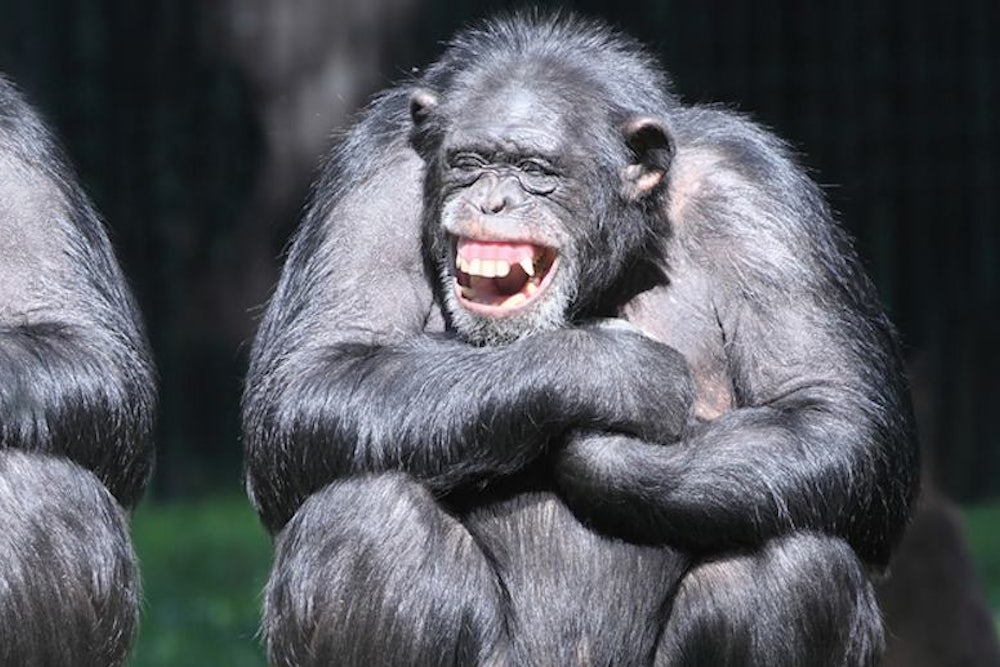Human beings are animals. We aren’t plants and we aren’t bacteria, we are animals. Among animals we are apes, specifically African apes. The other African apes—chimpanzees, bonobos and gorillas—are closer cousins to us than they are to the Asian apes: orangutans and gibbons.
So, one way to understand what makes us human is to ask: “What makes us different from the other apes, and from the rest of the animal kingdom?” What makes us special? For instance, unlike all the other apes, we walk on two legs and this frees our hands to do all kinds of things that other apes can’t do. And (perhaps the two are connected) we have much bigger brains than the other apes.
There’s another way to interpret the question “What makes us human?” which I won’t be dealing with, although it is important. What makes us humane? What are the qualities that we admire and aspire to: qualities that make us human as opposed to brutish?
We have big brains. Other species are marked out by other qualities. Swifts and albatrosses are spectacularly good at flying, dogs and rhinoceroses at smelling, bats at hearing, moles, aardvarks and wombats at digging. Human beings are not good at any of those things. But we do have very big brains; we are good at thinking, remembering, calculating, imagining, speaking. Other species can communicate, but no other species has true language with open-ended grammar. No other species has literature, music, art, mathematics or science. No other species makes books, or complicated machines such as cars, computers and combine harvesters. No other species devotes substantial lengths of time to pursuits that don’t contribute directly to survival or reproduction.
Our uniquely big brains evolved after our habit of walking on two legs. We can now trace our ancestry through a pretty continuous series of fossils, and are confident that our ancestors of three million years ago were members of the genus Australopithecus. The best-known australopithecine is Lucy—so called because the camp record player in Ethiopia was blaring out the Beatles’ “Lucy in the Sky with Diamonds” when the fossil hunters returned to camp with the momentous news of her discovery. Lucy had a chimp-sized brain but she walked on her hind legs. It is probably no accident that our brain started swelling like an evolutionary balloon after our hands were freed from the burden of walking and could concentrate on carrying food or manipulating tools.
But human beings have only recently shown how very special they are. Fifty thousand years ago we had the same bodies and brains as today and we probably had language. But we didn’t have much by way of art, and our artifacts were limited to the functional—stone tools for hunting and butchering, for instance.
That changed around 40,000 years ago, when the archaeological record shows a sudden magnificent flowering of art and even musical instruments. Cultural evolution—which outpaces by orders of magnitude the superficially similar genetic evolution that had given rise to our big brains in the first place—went into overdrive. Next came the transition from the hunter/gatherer to the settled agriculture way of life, soon to be followed by cities, markets, governments, religion and war. The Industrial Revolution expanded cities to megalopolises, propelling our species to worldwide (and potentially disastrous) domination, and even to reach out to the moon and planets.
Simultaneously, the human mind has reached out to the wider universe, and far beyond the time constraints of a human lifespan. We now know that the world limiting our ancestors’ brief lives is a tiny speck orbiting a small star among some hundred billion stars, in an average galaxy among some hundred billion galaxies. We know that the world began 4.6 billion years ago, and the universe 13.8 billion. We understand the evolutionary process that generated us and all DNA-based life.
There’s plenty that we still don’t understand, but we are working on it. And the urge to do so is perhaps the most inspiring of all the unique qualities that make us human.
Richard Dawkins’s latest book is An Appetite for Wonder: the Making of a Scientist.
This piece first appeared on newstatesman.com, where it is part of a series in collaboration with Radio 2’s Jeremy Vine show. Images via Shutterstock.
